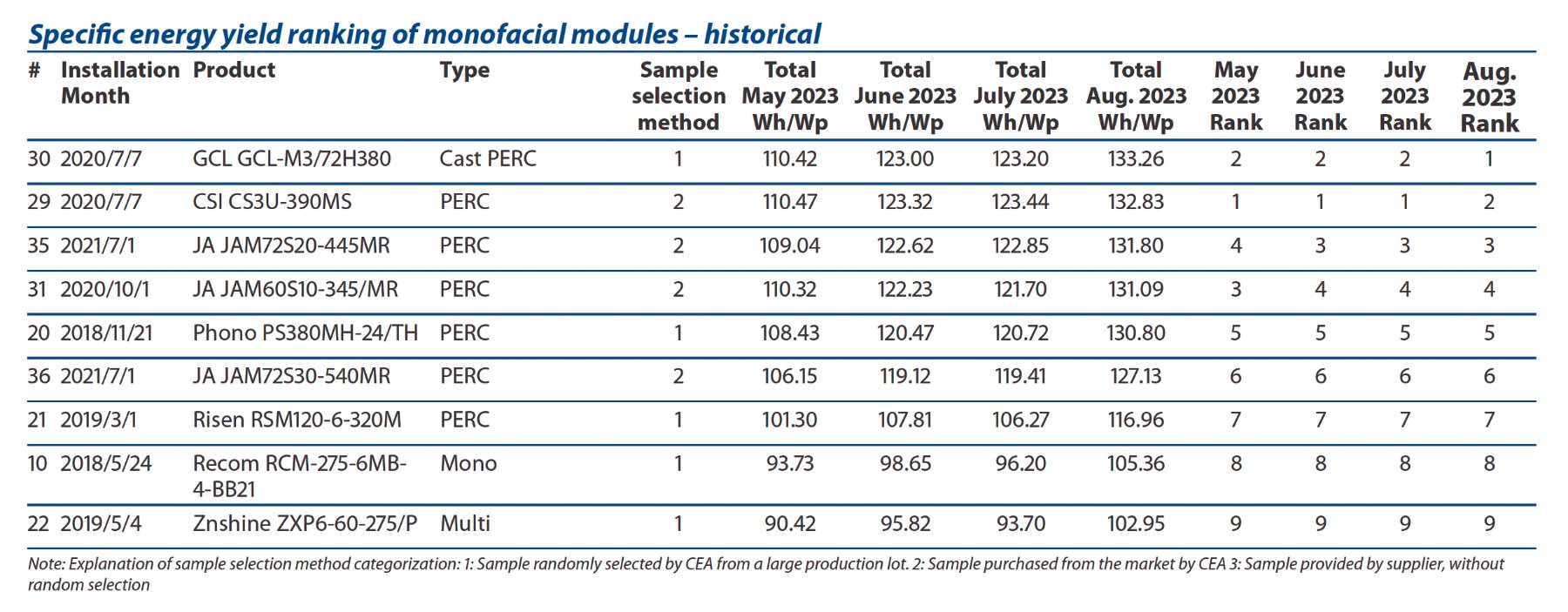pv magazine test: August 2023 Results
By George Touloupas
This article was originally published in pv magazine – October 2023 edition. Learn more about the pv magazine test here.
George Touloupas, senior director of technology and quality at Clean Energy Associates (CEA), analyzes the August 2023 results from the pv magazine test installation in Xi’an, China.
This month, new products have been added to the testing program, with many using new technologies such as tunnel oxide passivated contact (TOPCon), back contact, or heterojunction (HJT). Results from two new TOPCon products from Tongwei have been included in the outdoor test for the first time this month. TOPCon products from Astronergy and HY Solar have finished indoor testing and the test results will soon be available on the pv magazine website.
The average bifacial boost is 10.20% for August 2023. Bifacial boost is defined as the relative advantage of the average specific energy yield of all bifacial products compared to the average specific energy yield of all mono-facial mono PERC products.
Table 1: Bifacial boost - May to August 2023
Table 2: Energy yield ranking of bifacial modules - May to August 2023
Table 3: Specific energy yield ranking of monofacial modules - May to August 2023
The chart below shows the meteo station data (irradiance and ambient temperature) for August 2023. Unfortunately, two power cuts occurred in August, and with the loss of two days of meteo station data, only 23 days of power generation data is available.
Figure 1: Daily temperature and irradiance data - August 2023
Figure 3: Relative yield of different technologies - August 2023
Notes on the energy yield measurements:
The energy yield comparison among various technologies, including bifacial boost, will be analyzed using products installed after the beginning of 2019.
The energy yield is given in Wh/Wp and calculated by dividing the energy produced by the module by the Pmax at STC of the module. This Pmax is the maximum STC power after a process of stabilization.
The results are grouped in categories, per module type.
The bifacial boost depends on many parameters: the bifaciality factor, the installation geometry, the albedo of the ground, and the sun angle and diffuse irradiance. The ground in this case is grey gravel.
Test Cooperation
pv magazine test is a cooperative effort involving pv magazine, APsystems, CEA, and Gsolar. All testing procedures are carried out at Gsolar’s test laboratory in Xi’an, China. CEA supervises these tests and designed both the indoor and outdoor testing procedures.
















